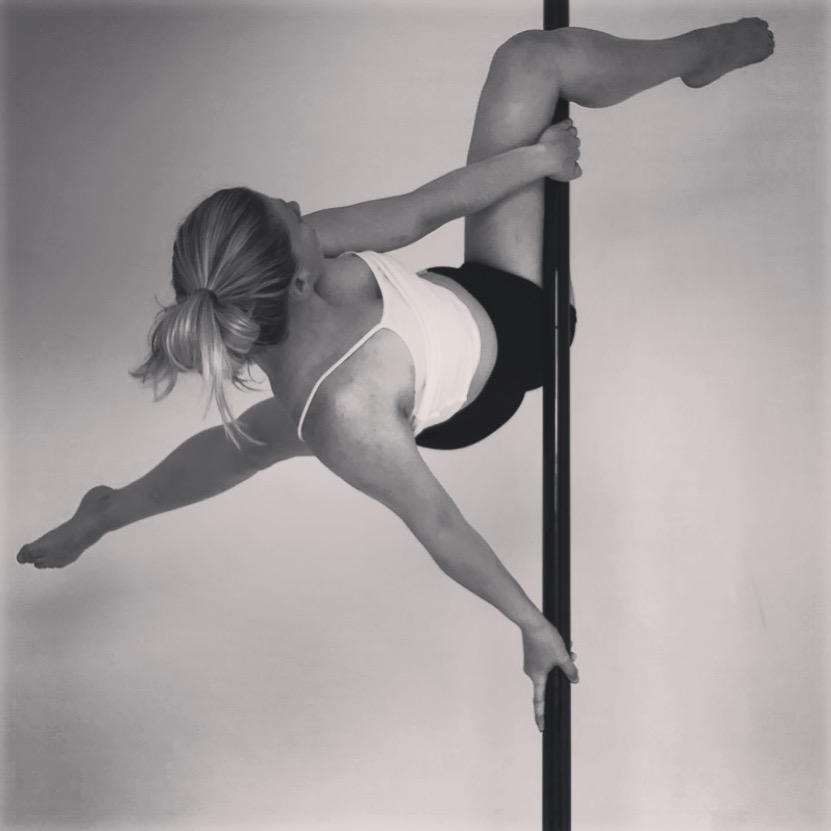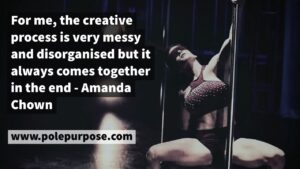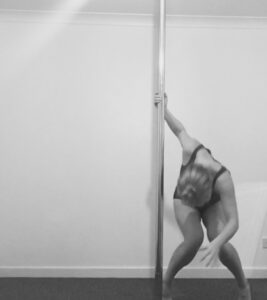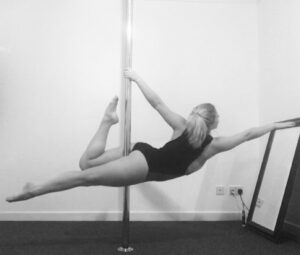If you copy from one author, its plagiarism, but if you copy from many, it is research – Austin Kleon
Recently I have seen pole dancers write “look at this move I made” or “credit to @suchandsuch for this beautiful move”, pole teachers say “please credit this move if you copy it and ask if you are going to reteach my content” and other comments such as “people are stealing my work”, “I don’t’ know where I seen this but I didn’t make it” etc. There is so much confusion and misrepresentation about who is the original creator so here are a few points to consider when thinking about who made what and how.
Creative Method
A choreographic method I have used on my own body for many years and that I have used when teaching both contemporary dance and pole dance students is this… Start with one move you already know, let’s say it is a superman where you have one hand on the pole, other arm reaching forward and both legs lengthened behind you with your thighs squeezing against the pole. I might ask you to break a line by bending one leg, or I might ask you to add or take away a hand grip point. In solving this mini task, you might fall out of a move. When you fall you might manage to hold an aesthetically pleasing pose and from this, hey presto, you have yourself a new pole move… bear in mind that many people fall and have probably also claimed that “trick” as their own. On a similar note, you might ask your friend to take a photograph of you and she takes it from the “wrong” angle, which turns out to be the angle that has helped you create a “new move”. Camera angle is a big one and quite often, what works for a split second photography, would never work in live performance.
Online
When you put your work online, you are essentially asking for exposure for whatever it is you are displaying. As soon as you hit the publish button, your work is up for FREE public consumption. Essentially you are giving something away, something precious to you, so instead of worrying about who is going to “steal” your trick, be a little bit more intentional about what you post, especially if you want to protect it. Of course if it was a paid product, like a book, you would have some legal rights to the work, but otherwise, just let it go or be more strategic about your content.
Another point to consider about the online element of stealing is the “following” of the person who the move has been stolen from and their engagement and algorithm etc. If that person steals from a person with a much smaller audience, the person with the lesser following has no chance of being acknowledged because the move is already branded as being conceived by the poler with the wider following.
Directly Stealing
Looking at one trick and trying to recreate it yourself is different to taking an hour long online class with an instructor who has worked for years to find their “flow” and their unique signature, only for someone to go teach the whole choreography, the whole trick combination or the exact class structure to the minute to their own student or audiences. However, again, once you have sold your content, it is no longer yours so the student should have every right to use the material exactly as you taught it with or without variation. This is the difficulty with the ephemeral nature of dance (I won’t go into this now because I would need another ten hours to write about it). So let us think about it another way, if I sold you a brush, do you think I have ownership about the way you are going to use that brush? I didn’t think so. This is not to say the maker of the brush should not be acknowledged.
An Example
Rather than selecting direct examples from the pole world, I want to give you a clear example of how choreographers have “stolen” from each other for years. The first video is Rosas danst Rosas by Anna Terese DeKeersmaker (1983) and the second is Beyonce (2011). Notice the year differences and similarities and ponder how much time has passed between the two before it was acceptable to “recycle” material. To add to this, I will add a video of pole mallakhamb (posted 10 years ago), which is where a lot of the more gymnastic type acrobatic pole work stems from…
Overall, this post is directed at those who need to obtain a sense of relaxation when it comes to people “stealing” their content. Either relax or become firmer with how you want your material to be used when your transient teaching, posting, performing of the movement has passed. As an artist myself, I offer you something that has helped me when I have seen other people directly plagiarising my work, even down to the way I hold my facial expression in a very particular pose, a great artist is able to let go of their creations because they trust they will always find more inspiration to continue with new creative endevours.
Peace.
Rowena x
P.S. If you want to explore and play more with your own creativity, take a look at my shop on Etsy for tools to enhance your creative practice.





Very interesting